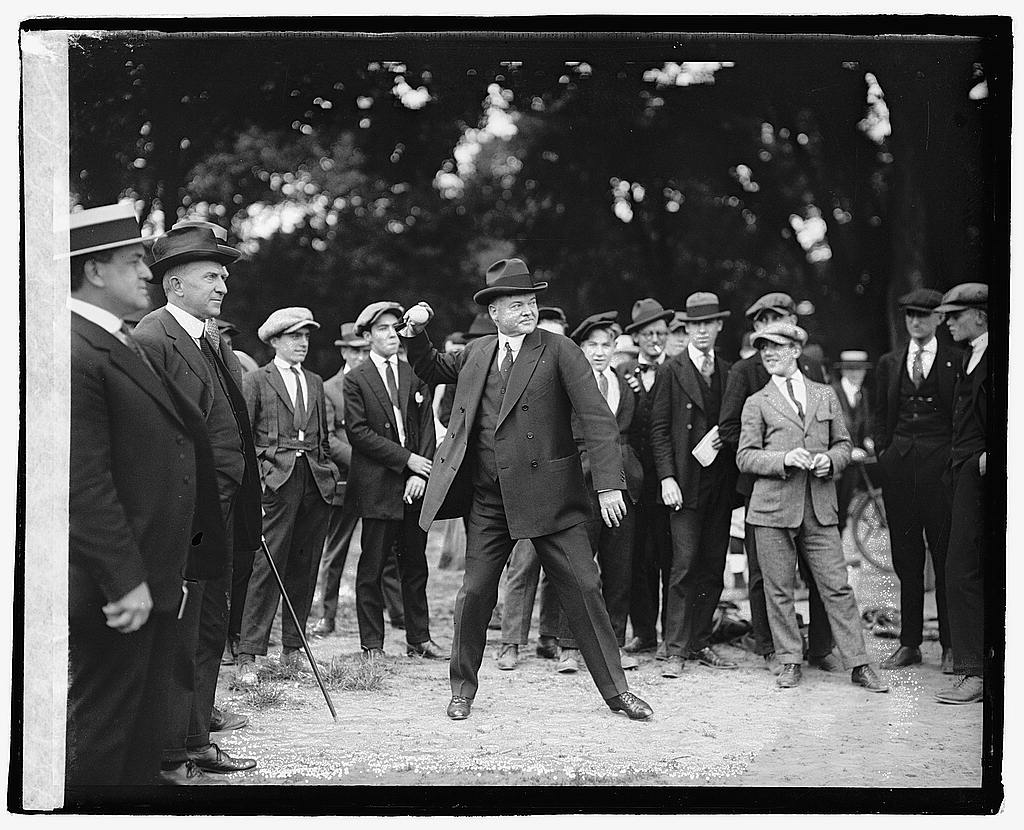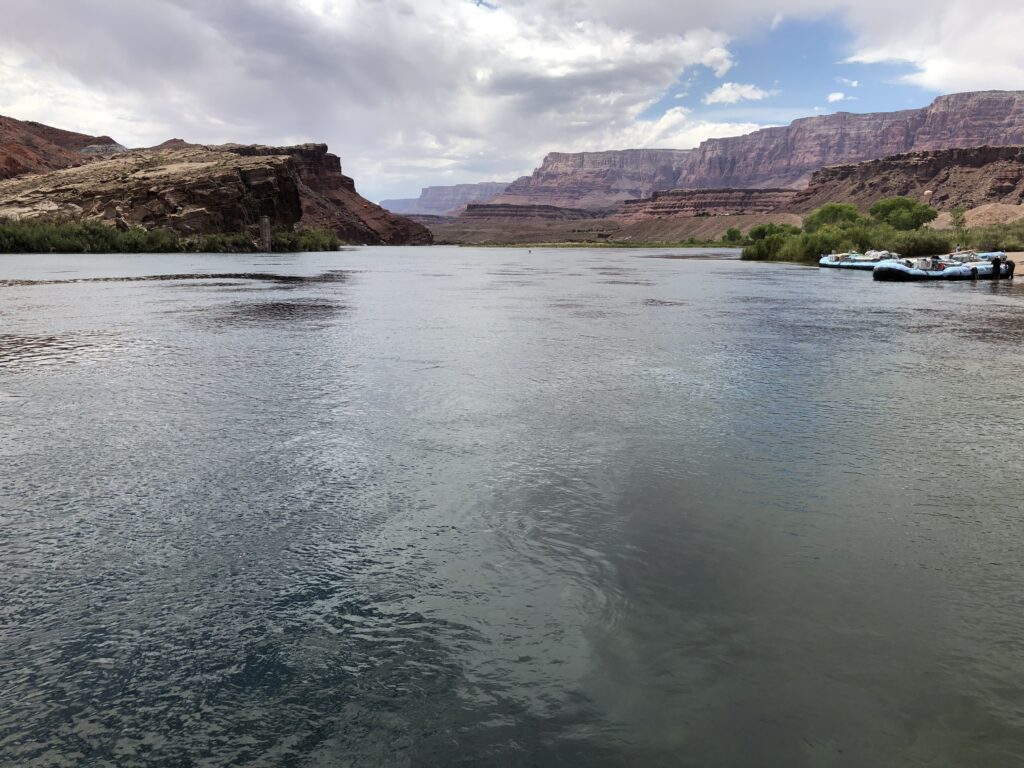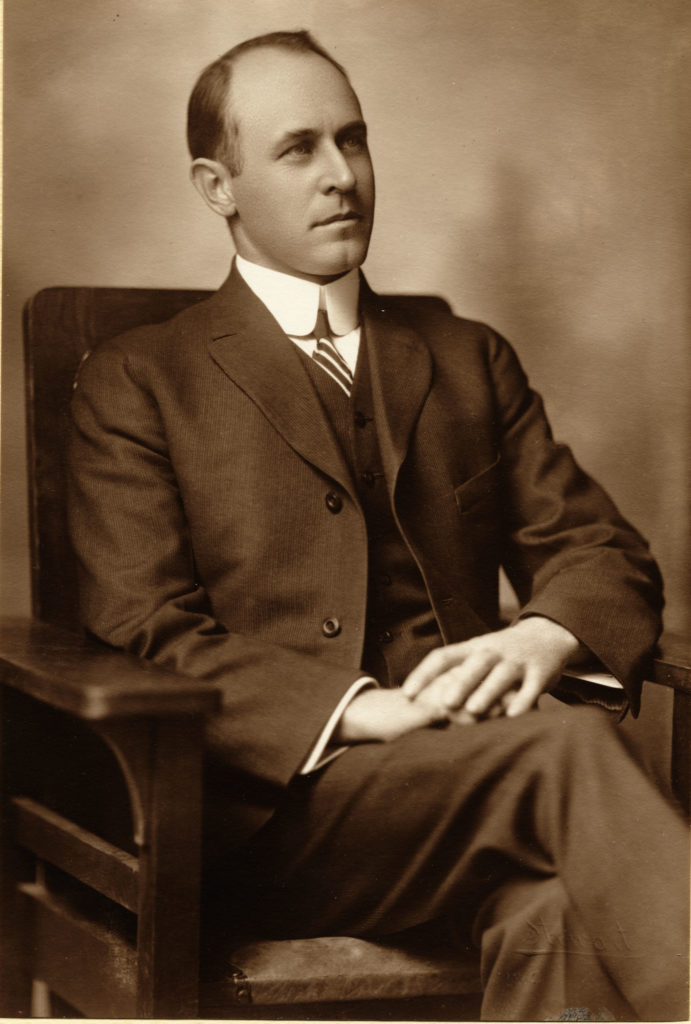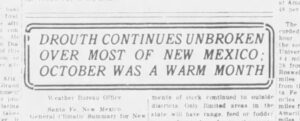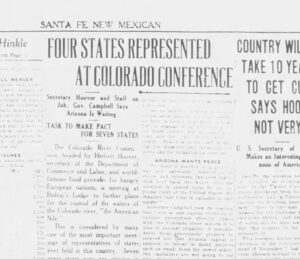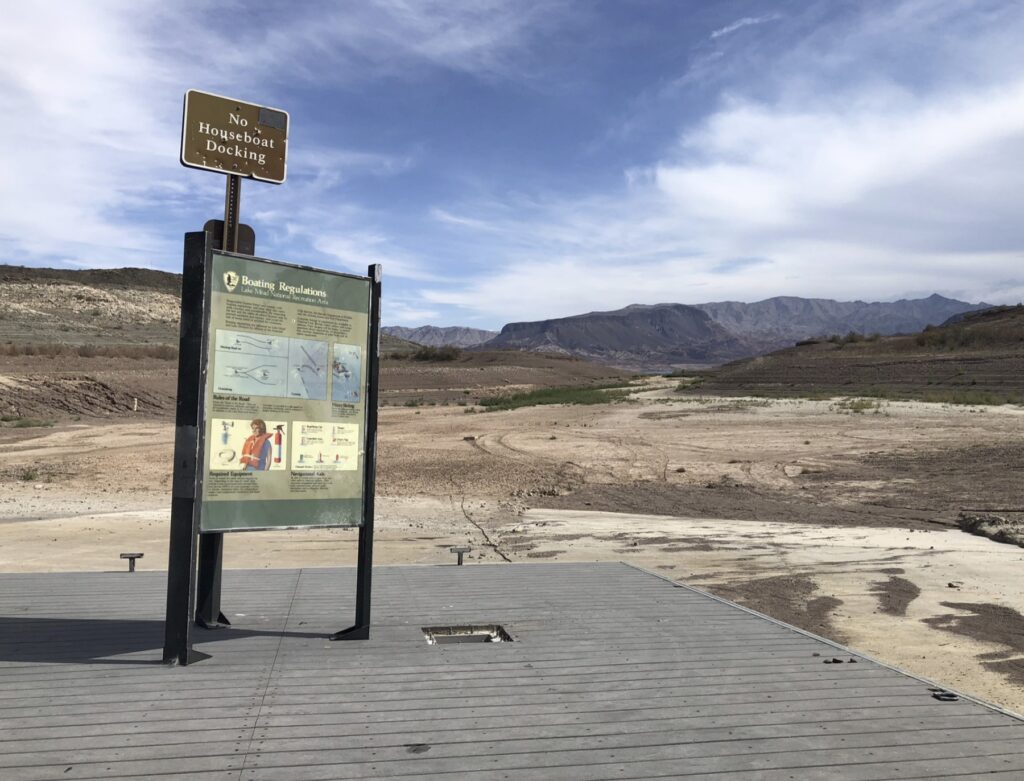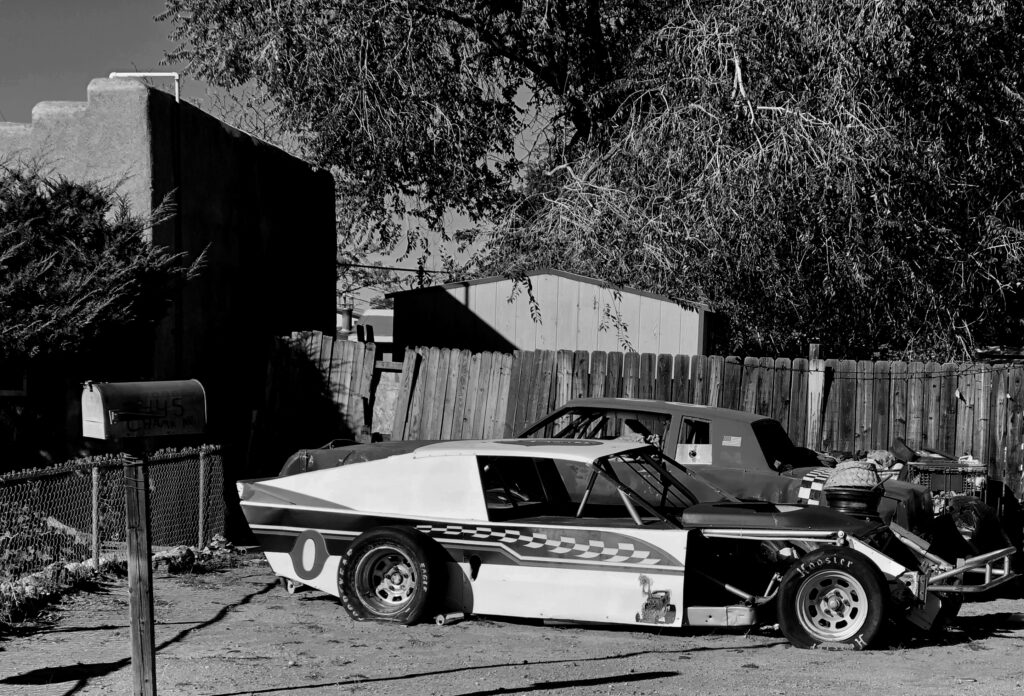By Eric Kuhn and John Fleck
Colorado River Commission Chairman Herbert Hoover gathered the seven states’ representatives at opened at 11:00 a.m. Nov. 15, 1922, for the 17th meeting in their efforts to forge an agreement to share the Colorado River.
They had been holed up at Bishop’s Lodge outside Santa Fe for five days, wrestling with how to divide the river. By that point in the negotiations they had settled on a general framework, dividing the river into an “upper” and “lower” basin, but were stuck on the question of how much water the upper states would be required to send each year to the lower states.
Hoover intentionally set a later starting time that day to give the upper river states plenty of time to caucus among themselves to consider his proposal from the previous day that the Upper Basin deliver 82 million acre-feet every ten years plus a 4 and ½ million acre foot minimum annual flow.
Quibbling over the size of the Upper Basin’s obligation
New Mexico’s Steven B. Davis answered on behalf on the four upper states. His bottom line was that delivering 82 million put too much of the drought risk on the Upper Basin. He countered with a proposal to “guarantee” a flow of 65 million acre-feet every ten years. Davis noted that if the lower river would accept the 65 million, the upper states would negotiate an annual minimum flow.
Davis was likely chosen to be their spokesman to show that the upper river commissioners were united on this issue and their offer was not just Delph Carpenter’s, the Colorado representative who so far had monopolized the discussions. New Mexico’s Davis went on to explain that the lowest ten-year flow at Lee’s Ferry was 155 million acre-feet, thus 82 million was more than 50% of the lowest ten-year period, which Davis put at 77 million. He acknowledged that 65 million was less than a 50-50 equal divide noting since they only had a short 20-year record, they had no idea how low future drought might go, thus even guaranteeing 65 million was risky.
Carpenter supplemented Davis by explained that moving the dividing point from Yuma to Lee’s Ferry effectively gave the lower river “all the flow of the lower streams to the territory in which they arrive.” He argued that a ten-year flow of 65 million at Lee’s Ferry plus the Lower Basin’s tributaries would be the equivalent of a fifty-fifty split. Nevada’s Scrugham added “Mr. Chairman, I suggest that we abandon the discussion of that six million five hundred-thousand-acre feet per annum which would be out of the question for the lower states to accept. We are so far apart it does not seem that we will get anywhere if this figure is not changed.” Steven Davis responded, “This is not a division, we are not dividing the waters, we are guaranteeing water.”
Arizona: allocation should be based on the needs of each basin, not an even split
Arizona’s Winfield Norviel simply reiterated his position that an equitable division should be based on the needs of each basin, not an arbitrary fifty-fifty split. He went on to say that the lower basin would accept 82 million plus a 4.5 million minimum annual flow as the basis for a compact, adding that he would accept a four million acre-feet minimum if the upper river changed its ten-year flow to a five-year flow (presumably 41 million every five years). The discussion dragged on with little give on either side. Finally, Hoover stated, “The business of the chairman is to find a medial ground. So, I am wondering if the northern states will make it seven million five hundred thousand?” Hoover suggested a ten-year delivery at Lee’s ferry of 75 million acre-feet with a 4 million acre foot annual minimum.
Before they broke for further caucusing, Wyoming’s Emerson asked about addressing the needs of Mexico. Norviel responded – “I don’t think we need to take that into consideration.” To which Carpenter countered “By eliminating the Gila and the Little Colorado and other streams, the factor of risk lies in the allocation of the Mexican Burden. We are willing to bear our share of the Mexican burden, but the sacrifice should be mutual.” Norviel added one more compact option. He suggested the river be spilt on a equal basis at Lee’s Ferry on an annual basis based a reconstructed (AKA “natural” or “virgin” flow) river. Caldwell immediately responded that determining the river’s reconstructed flow annually would be “very difficult, impossible, practically.”
Hoover quickly adjourned the meeting so each basin could caucus. He knew that he had some challenging shuttle diplomacy ahead before they would meet again tomorrow morning.
Authors’ Note – One hundred years ago the commissioners were concerned with guaranteeing a flow based on incomplete data. We imagine that if the negotiation were being held today, the conversations would be very similar, but the risks would be due to climate change.

